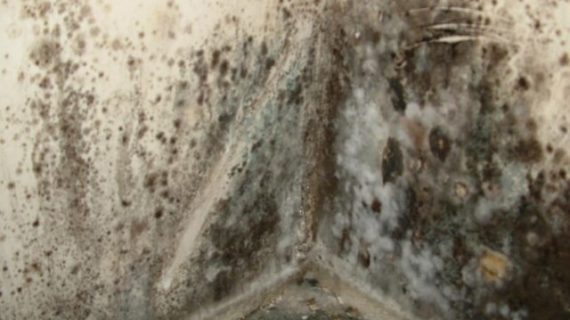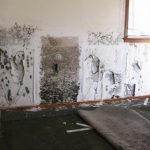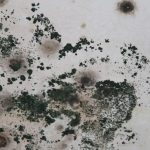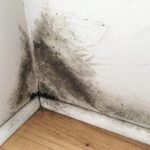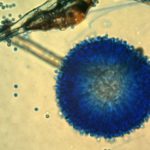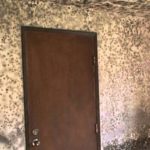Black mold (Stachybotrys chartarum) is a type of toxic mold which infests areas with great moisture. It can be found in some areas of the house or office. Black mold usually starts in the corner of the wall before spreading quickly into a larger area.
In general, you can identify black mold from its smell and look. Because it usually grows in wet and dark places, black mold grows unpleasant odor which is easy to notice.
The dank and musty smell can be a sign of black mold presence. As for the look, black mold can appear in black, gray, or dark green color.
However, the look of toxic black mold can be different depending on the surface it appears.
Recognize and identify what black mold looks like in different surface and area to make you more aware of black mold, the kind of mold that can be dangerous for your health.
Identifying black mold spores
Before looking more closely at different appearances of black mold in various surfaces, the first thing you need to do is identifying black mold spores that may linger around your house.
For starter, you can check several parts of the house which have large amounts of moisture and humidity.
Bathroom, basement, kitchen, and attic are some areas that have a high chance of black mold infestation. Also, you can check for black mold spores behind the wallpaper or under the carpet.
While other types of mold come in lighter color shades, black mold appears as dark greenish colors.
Most of the time, black mold grows in dark circular patterns on the infected surface, starting from the area with greater moisture and spreading to other parts of the surface which have less amount of water circulation.
Please note that black mold is naturally toxic due to its active element, a mycotoxin. Because of that, it is better for you to keep your hands, eyes, and nose protected when inspecting and identifying the presence of black mold in your house.
What does black mold look like on wood?
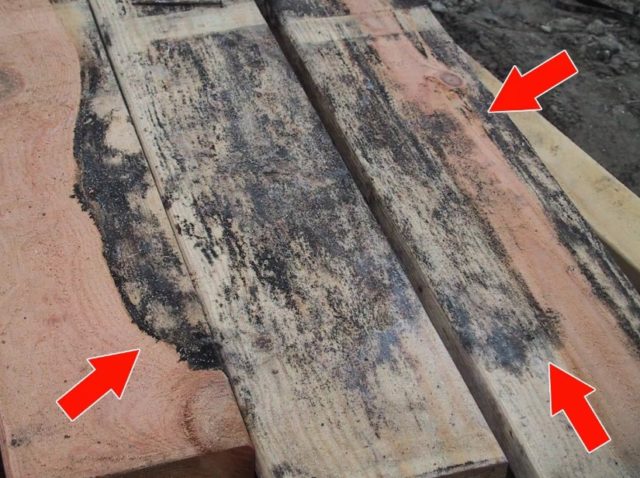
Identifying black mold on wood is somehow not as easy as detecting it on other types of surface. It is because the wood itself has special pattern and patch.
For that reason, black mold that has infected wood is sometimes misunderstood as the wood pattern.
One thing to distinguish black mold from the wood’s natural pattern is looking for the color which is usually in a darker shade than the actual color of the wood.
Black mold on wood commonly appears on one side, either bottom or top, before it grows larger to the rest of the surface.
What does black mold look like on concrete?
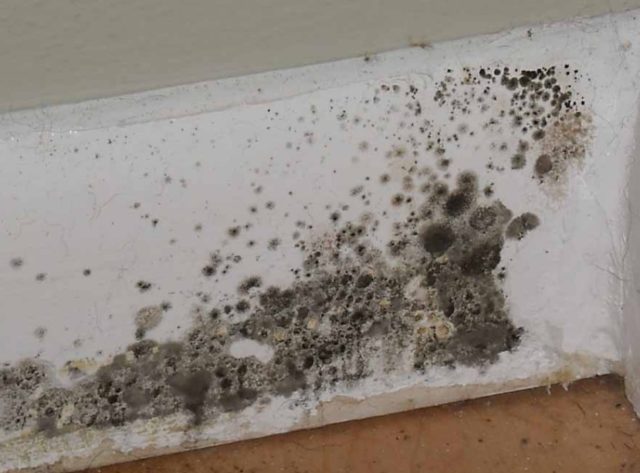
Compared to other kinds of surfaces, concrete is the less likely area that can be infected by black mold. However, in some bad conditions, the growth of black mold on concrete is possible.
The concrete wall that has been infected by black mold will look like it is covered by slimy, greenish or black patches gathering in colonies.
Black mold can grow and spread on the concrete if its surface contains excessive moisture due to a water leak or if the house has recently been flooded.
In addition to that condition, black mold can live on the concrete wall if it is covered by dust, another food source that supports the black mold growth.
What does black mold look like in a Petri dish?
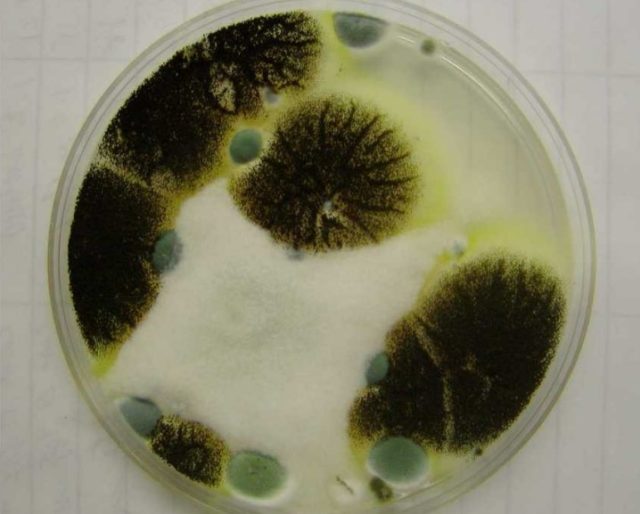
Petri dish is a small rounded dish which is used in scientific tests, especially for researching bacteria.
After black mold inspection in the house is done and the mold sample has been collected, the sample is usually placed in a Petri dish before being tested and analyzed in the laboratory.
On a Petri dish, a black mold commonly appears as double layer circular cells with the white membrane in the middle. The main colors vary from the yellowish shade, greenish black, dark green, and gray.
Moreover, in microscopic view, black mold shows shiny and slimy surface. The shiny and slimy appearance is the special feature of black mold that distinguishes this toxic mold from other types of mold.
What does black mold look like on drywall?
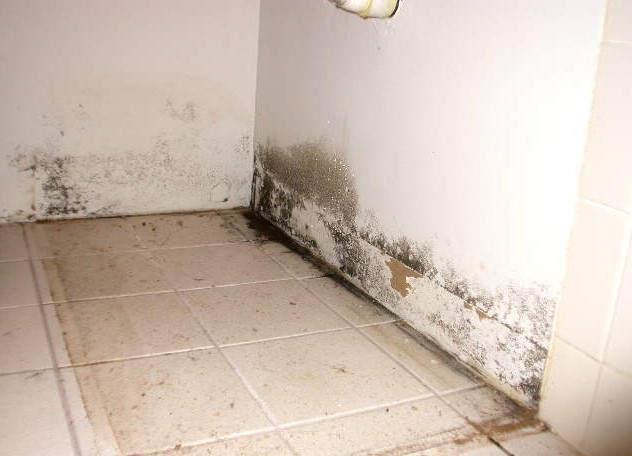
Whether it is made of wood or stone, drywall is a potential place for black mold to grow. The cellulose contained in the drywall construction can cause the molds to grow larger if they are not removed immediately.
On drywall, black mold appears as black patches on the surface. If you find black patches on the outer part of the wall, there is a chance that the black molds have been grown behind the wall as well.
The first sign of black mold can be easily found on the corner of the drywall. It starts as some dots in random patterns at first but can grow larger and develop fast to other areas of the wall.
What does black mold look like on glass?
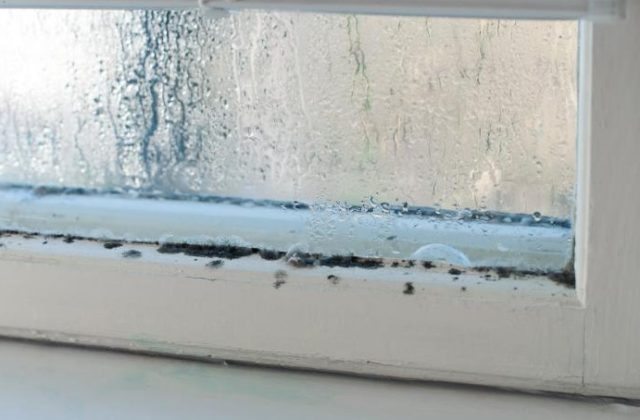
Flower vase, shower glass stall, and windows are some glass objects that have the chance of getting infected by black mold.
Although glass is a non-porous surface that will be easily cleaned when the mold is developed, you still need to know the signs of black mold growth on the glass.
Transparent materials like glass are easy to notice when black mold has infected it. The surface usually turns darker and is filled with dark-shading spores.
In containers made of glass such as bottle or vase, black mold can be found in the bottom space in addition to its appearance on the side parts.
Now that you know the common looks of black mold in different kinds of surface, you can identify the presence of this toxic mold at the beginning of its growth.
Early detection of black mold can save your time and energy when you have to remove the mold from your house. It can also avoid the risk of health problems caused by black mold.
Despite that, prevention is always better than cure.
It is better for you to prevent the presence of black mold in every area of your home by doing routine cleanup, regular checking for any sign of mold or black mold, in particular, providing good air circulation, and keeping the humidity of each room at low level.
